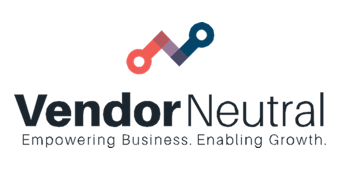Updated! Why Sales Tools Fail
2 Key Reasons Sales Tech Falters & the Easy Way to Fix It
It’s no surprise that sales technology has become an increasingly prevalent part of a company’s sales approach. As of 2017, one survey revealed companies spent an average of $4,581 annually on sales technology over nearly six sales tool solutions.
Despite being such a financial commitment, sales tools often fail for companies. Failing here can mean everything from providing zero return on investment to simply not being as effective as they could be.
Here are two major reasons that might happen and how you and your company can avoid this pitfall:
2 Key Reasons Sales Technology Resources Fail for Companies
- Recommendations and Testimonials Don’t Work in This Sector
The success of a sales technology tool is entirely based on the exact needs, desires, and challenges of the specific company. In most buying situations, you read testimonials and reviews, or you rely on the word of a trusted source who endorses the product. That doesn’t work here. One company’s challenges aren’t your precise challenges, so the sales tech solution simply isn’t going to work exactly the same for two different companies.
Testimonials or personal recommendations are a great way to validate a sales tech choice after it’s been selected. Once you’ve done your research, choosing sales tools based on your priorities and capabilities, testimonials confirm things like positive interactions and customer service with the vendor or the logistical functionality of the tools.
(Ready to get started on your sales tech selection? Use our sales technology selector to see which tools best align to your specific priorities.)
- The Decision-Making Process Is Siloed
Sales technology tools are a financial commitment. That’s a fact no company can get around. Because these tools are so often viewed exclusively through this financial lens, the decision-making often falls to those who control the budget. If those keepers of the coffers don’t seek the input of all the stakeholders, though, you’re setting yourself up for poor adoption or tools that don’t adequately address your specific needs and challenges.
"Jumping into a new piece of sales tech without adequate communication across the stakeholders is a recipe for having to justify the tool and struggle for company-wide adoption."
How to Maximize ROI from Your Sales Tech Selections
Failure of sales tools means lost time, money, and effort. How do you avoid that?
Perhaps most importantly, final decision-makers need to adjust how they identify organizational problems and the tools to solve them. Decision-makers must realize they can’t accurately determine problems and the best solutions without seeking the input of all stakeholders.
Say, for example, you’re in charge of greenlighting a new piece of sales tech. From your perspective, the problem is that sales reps simply aren’t doing what they should be doing. You might, therefore, want to invest in more training. If you talk to all the relevant stakeholders, though, you might discover that reps are doing exactly what they’re supposed to be doing, but they lack the appropriate channels to communicate that information. The solution there requires a very different piece of sales tech.
Maybe you’ve accurately identified the problem, but you’ve misread the urgency. To you, maybe it’s a massive problem. If you talk to everybody involved, though, you could discover much more pressing, financially relevant problems that need to be solved first.
Jumping into a new piece of sales tech without adequate communication across the stakeholders is a recipe for having to justify the tool and struggle for company-wide adoption. While lots of companies view low tech adoption rates as a symptom of stubbornness or bad attitudes, think about this. Would salespeople actually refuse to utilize a tool that helped them sell more in less time and with less effort? Probably not.
Low adoption or failure of a sales tech solution is almost exclusively about a tool being handed down without appropriate consultation of everyone affected by that tool. It’s about misidentifying the problem, overestimating or underestimating the urgency of that problem, and not viewing the whole picture when it comes to potential solutions—all of which come down to inadequate or siloed communication.
Remove the silos, enhance communication, and see your tech solutions thrive!


